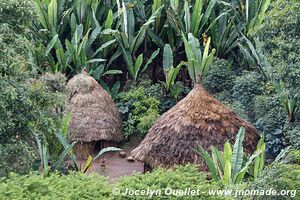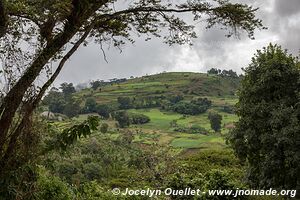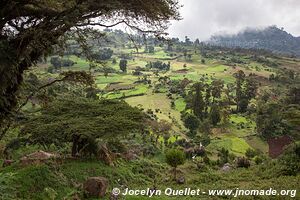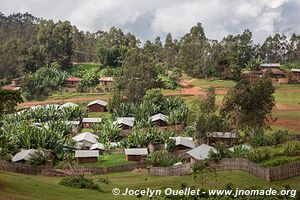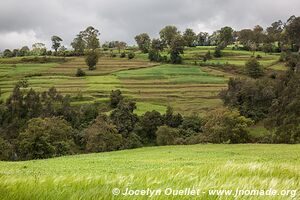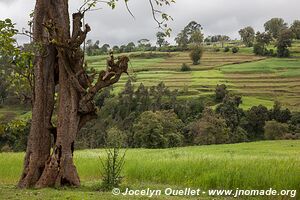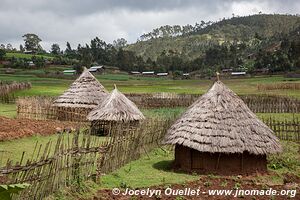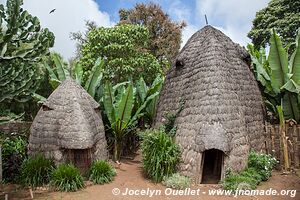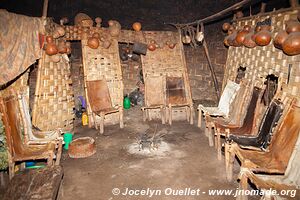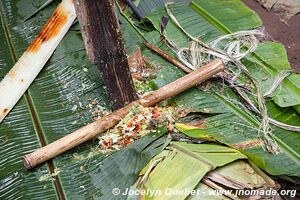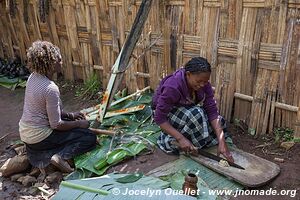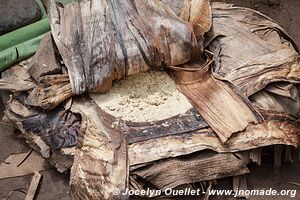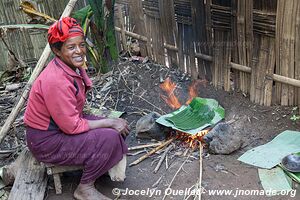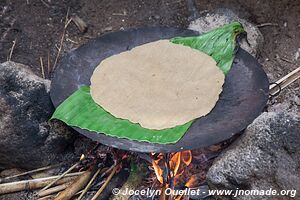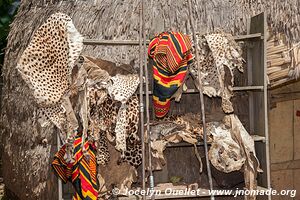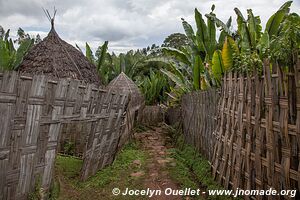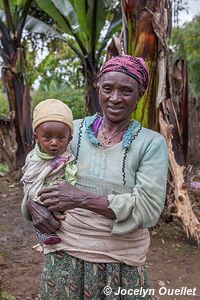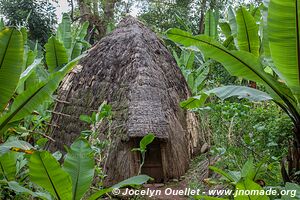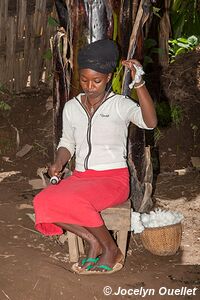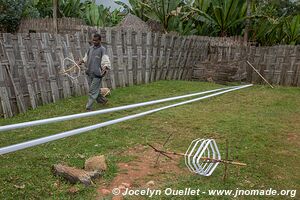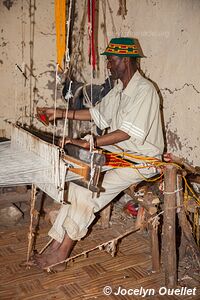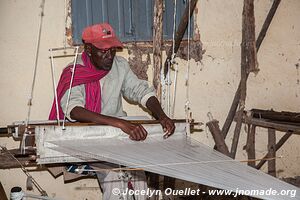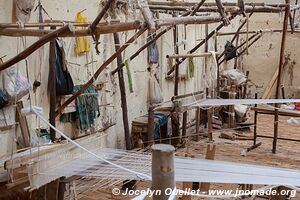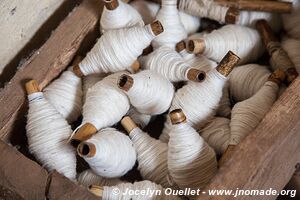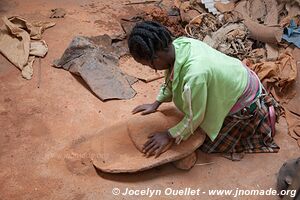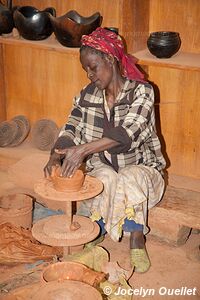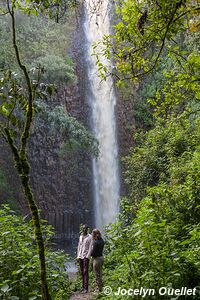Dorze and Chencha
Dorze is the name of a village, but also the name of an Ethiopian tribe. These people live in the Guge Mountains and the most obvious characteristic is their house in the form of a giant beehive. Dorze people are in general excellent farmers who know how to grow crops without causing land erosion.
We got a guided visit near the village in order to learn about their culture.
A few places in the regions are less typical. Here, modernity has changed the beehive huts for more modern houses... but they are not as nice.
However, a majority of the houses are still of a traditional style.
Our tour about the Dorze culture starts in front of these typical houses.
These houses are made to last around 50-60 years. Inside, a wood fire is lit regularly. The fire produces sooth that sticks to the roof and prevents the termites from eating the house. However, the bottom of the house is not protected and the termites can have a feast there. Thus, after some years, the house shrinks and the door must be redone when needed. When the house becomes too small, it is used as a kitchen or for couples (the left house on the photo). It is quite ingenious!
Here is a traditional interior with the fire protecting the house and giving warmth during the cold nights.
In the following images, one can see the people preparing the bread that Dorze eat daily. It is made from a false banana tree (a plant similar to the banana tree, but that do not produce any bananas).
Some pulp is obtained by rubbing the interior of the false banana tree. This pulp ferments for three weeks before being cooked on a fire. The end result is good dense bread that is eaten with a spicy sauce or with honey.
The Dorze culture is known for its excellent work in weaving. In this culture, the women perform the first step of the weaving. They take the raw cotton, untie it and make small spindles of thread.
From that stage, it is the men who take over and perform the weaving of scarves and blankets. In the photo, this man take all the spindles of thread made by the women and makes a single solid and long thread of cotton.






